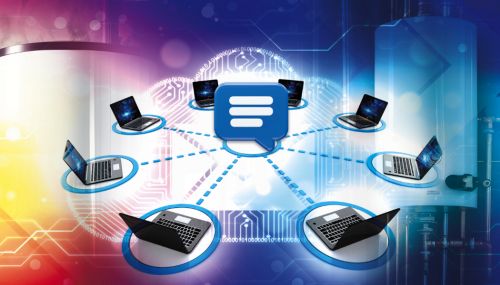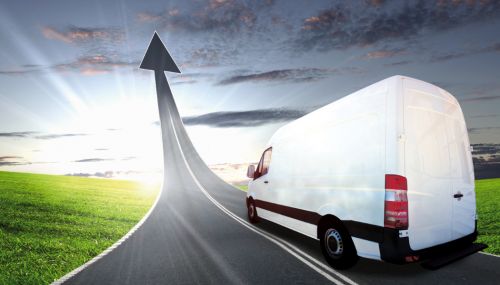All
New World Marketing
by Richard Rutigliano, PriMedia, Inc.

What the IRA means for your marketing campaigns
The passage of the Inflation Reduction Act has changed our industry. There is hope in the inclusion of tax credits and rebates for biofuels and oil-fired equipment, as well as trepidation from the much stronger incentives for electric heat pumps and other alternative energy technologies. It is our job – your job – to alleviate any confusion your customers might have, and to show them that our clean, renewable Bioheat® fuel is a viable and promising energy option that is getting better every day.
I recommend you read NEFI’s IRA summary in this issue for a closer look at the new law (see "The Inflation Reduction Act: What's in it for Heating Fuel Dealers?"). Many of its provisions directly affect your marketing. Specifically oil-fired boilers, water heaters and furnaces are eligible for expanded home energy efficiency tax credits and can be bundled with state-administered rebates for whole-home efficiency improvements and electric heat pumps (for hybrid installations, more about these shortly).
Further, while your customers might not care that tax credits and incentives for producers, distributors, and blenders of biofuels and biodiesel were included in the IRA, this does go to show that your products will be around for the foreseeable future. References to biofuel compatibility in the tax credits for oil-fired heating systems reinforce this fact. And that will help reassure customers that the solutions you deliver are both reliable and cost-effective.
Messaging to Make the Sale
Your marketing strategy will boil down to the issues on your customers’ minds: affordability, dependability and the environment. Painted in broad strokes this way, your post-IRA message isn’t much different than before. But the difference is in the details.
In previous (pre-IRA) articles we discussed the issues related to selling oil-fueled equipment in light of rising prices, clean-energy laws promoting electrification and carbon reductions. Once again, you need to reassure the customer that their investment in a new heating system is safe: they do not need to rip out their existing system to switch to electric heating. Additionally, ENERGY STAR® tax credits reinforce the importance of high efficiency oil-fueled equipment for a clean future.
Consumers might not know or care that the leader of the International Energy Agency recently declared that energy efficiency is “the cleanest, lowest cost, most overlooked resource in the climate fight,” but the fact that their new equipment can immediately reduce their fuel consumption and that your Bioheat® fuel is already lowering GHG emissions is a message they can get behind.
For those customers considering electric heat pumps, it is in their best interest (and yours) to remind them that only about 15% of installations are used for full heating, due to their ineffectiveness as temperatures approach or drop below freezing. Here is where NORA’s “Best Practices Guide for Hybrid Heating Systems” can be helpful, proving that the greatest cost savings and efficiencies come from dual-fuel “hybrid” systems with automated controls to switch to the most efficient equipment based on seasonal temperatures.
The cost differential between an upgrade and conversion could, of course, be the strongest tool you hold. For the price conscious consumer (and who isn’t one these days), you can combine tax credits, financing, and federal, state and industry rebates to make the cost of an upgrade that much more appealing, and then sweeten the deal with company incentives: free or discounted service plans, reduced fuel prices, bonus loyalty points and other offers. Of course, as always, you should review any such package discounts with your accounting department before rollout.
Maximize ROI
Your equipment upgrade marketing should be more tightly targeted than other communications, and this may also help you manage your ad spend more effectively.
Step one will be to use the data in your CRM to find customers with older systems, equipment requiring repeated service calls, or those who have seen unexplained spikes in consumption. Target these accounts with emails, direct mail, and custom messaging on your account portal.
Step two is to look into the micro-targeting available through digital advertising. Programmatic ad placements target viewers by home age and value, estimated household income, and recent online activity, among other filters. Then they display your campaign on all the target individual’s devices including modern TVs. Other digital options, via Google, social media and other search engines, offer similar, if less detailed targeting. Digital advertising is one of the quickest options to deploy and adjust, without long-term obligations or high entry costs.
PriMedia will be presenting a HEAT Show Management Session about this topic on Wednesday, September 28 at 11:20 a.m. in Room 556A. I hope you join us for more information on how to market your business in a post-IRA world.
Richard Rutigliano is President of PriMedia, Inc., an integrated and communications firm specializing in the home energy sector. He can be reached at 516-222-2041 or rrutigliano@primediany.com.
Related Posts
 It’s Upgrade Season. Get the Sale.
It’s Upgrade Season. Get the Sale.
Posted on October 16, 2025
 Your Business Rises and Falls by Your Customer Service
Your Business Rises and Falls by Your Customer Service
Posted on September 19, 2025
 Teamwork Makes the Dream Work!
Teamwork Makes the Dream Work!
Posted on August 18, 2025
 Keeping Your Price Protection and Budget Plans Safe in a Volatile Market
Keeping Your Price Protection and Budget Plans Safe in a Volatile Market
Posted on July 28, 2025
Enter your email to receive important news and article updates.
